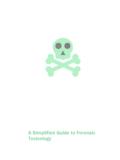Transcription of New Zealand Datasheet Name of Medicine - Medsafe
1 New Zealand Datasheet 1 PRODUCT NAME DOZILE 25 mg capsules 2 QUALITATIVE AND QUANTITATIVE COMPOSITION doxylamine Succinate 25 mg Capsules 3 PHARMACEUTICAL FORM Liquid filled soft gel capsules, purple, containing 25 mg doxylamine succinate. 4 CLINICAL PARTICULARS Therapeutic indications Temporary use in the relief of insomnia. Dose and method of administration Adults: 1 capsule 30 minutes before retiring, or as directed by a pharmacist or physician. Maximum stated dose should not be exceeded. Dozile is recommended for occasional use only for periods of no longer than a week at a time.
2 If sleeplessness persists, consult your doctor. Note: Dozile is not recommended for children under 12 years of age. Contraindications Hypersensitivity to doxylamine , other ethanolamine derivative antihistamines or to any other ingredient in the product. Special warnings and precautions for use Caution should be used if taken with alcohol. Due to the anticholinergic properties of antihistamines, caution should be used when Dozile is taken concurrently with other medications. (See section ) Caution should be taken by those with narrow angle or open-angle glaucoma, urinary retention, prostate enlargement, pyloroduodenal obstruction, epilepsy or severe cardiovascular disorders.
3 doxylamine may suppress positive skin test results. Use in Children Dozile is not recommended for children under 12 years of age. The safety and efficacy of doxylamine as a night time sleep aid in children younger than 12 years of age have not been established. In addition, children may be more prone than adults to experience paradoxical CNS stimulation rather than sedation when antihistamines are used as night time sleep aids. Use in the Elderly The elderly may be more sensitive to the effects of the usual adult dose. Interaction with other medicines and other forms of interaction Dozile produces an additive effect when administered with other CNS depressants such as opioid analgesics, neuroleptics, alcohol, hypnotics and psychotherapeutic drugs.
4 MAOIs may enhance the antimuscarinic effects of doxylamine . doxylamine has additive antimuscarinic action with other antimuscarinic drugs such as atropine and tricyclic antidepressants. Dozile may decrease the emetic response to apomorphine. Concurrent use of oral contraceptives does not appear to affect the pharmacokinetics of doxylamine . Fertility, pregnancy and lactation Pregnancy Category A Drugs that have been taken by a large number of pregnant women and women of childbearing age without any proven increase in the frequency of malformations or other direct or indirect harmful effects on the fetus having been observed.
5 Use of Dozile should be avoided during pregnancy. Breast feeding Use of Dozile should be avoided during lactation. First generation antihistamines may inhibit lactation because of their anticholinergic actions. Small amounts of antihistamines are distributed in human breast milk. Use is not recommended in nursing mothers because of the risk of adverse effects, such as unusual excitement or irritability in infants. Because of the potential for serious adverse reactions to antihistamines in nursing infants, a decision should be made as to whether to discontinue nursing or doxylamine taking into account the importance of the drug to the woman.
6 Fertility No data available. Effects on ability to drive and use machines doxylamine causes drowsiness. Patients should not drive or operate machinery if affected. Undesirable effects CNS: CNS depression, stimulation (insomnia, nervousness, euphoria, irritability, tremors, nightmares, hallucinations, convulsions), headache, lack of coordination, dizziness, psychomotor impairment. Gastrointestinal: Constipation, nausea, vomiting, diarrhoea, increased gastric reflux, epigastric pain. Respiratory: Thickened respiratory tract secretions.
7 Local: Dry mouth. Cardiovascular: Palpitations, arrhythmias. Ophthalmic: Blurred vision. Renal: Urinary difficulty or retention. Other: Hypersensitivity reactions, blood disorders, hypotension, tinnitus and paraesthesia. Reporting of suspected adverse reactions Reporting suspected adverse reactions after authorisation of the Medicine is important. It allows continued monitoring of the benefit/risk balance of the Medicine . Healthcare professionals are asked to report any suspected adverse reactions via Overdose Overdose produces signs and symptoms of anticholinergic toxicity.
8 Acute overdose may cause various reactions including dry mouth, fixed and dilated pupils, flushing, gastrointestinal symptoms, insomnia, nervousness, euphoria, irritability, tremors, nightmares, hallucinations, CNS depression or stimulation, impaired consciousness, seizures, tachycardia, mydriasis and a psychosis similar to that in catatonic stupor. Rhabdomyolysis with impairment of renal function and acute renal failure has been observed. However, in one series of cases of overdose, 39% of patients studied had no symptoms.
9 Stimulation is particularly likely in children. Fatalities have been reported from doxylamine overdose. These have been characterized by coma, grand mal seizures and cardiorespiratory arrest. Children appear to be at a high risk for cardiorespiratory arrest. A toxic dose for children of more than mg/kg has been reported. A 3 year old child died 18 hours after ingesting 1,000 mg doxylamine succinate. There is no correlation between the amount of doxylamine ingested, the doxylamine plasma level and clinical symptomatology.
10 Treatment As overdosage may produce potentially fatal cardiovascular or CNS reactions, patients should be monitored for any abnormalities of vital signs. Adequacy of ventilation and blood pressure should be assessed and full supportive care, including oxygen and assisted ventilation, be provided if required. The patient should be observed for evidence of rhabdomyolysis. Laboratory tests on admission should include a determination of creatine kinase. If this is elevated, a test for myoglobin in the urine should be done and, if present, is a contraindication to acid diuresis.















